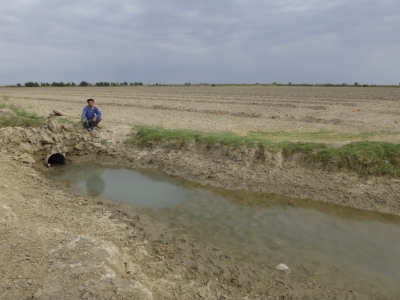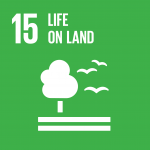Turkmenistan begins developing a National Adaptation Plan with funding approved by the Green Climate Fund

The Green Climate Fund (GCF) approved a $US1.8 million project in Turkmenistan to develop a National Adaptation Plan and build resilience in the water sector and capital city with support from UNDP in Turkmenistan.
October 2021 – Turkmenistan is a Central Asian country with 80 percent of its territory made up of the Kanakum desert – an area with no rivers or surface water flows. The country has plentiful hydrocarbons, with the fourth largest natural gas reserves in the world. Turkmenistan is vulnerable to climate change due to decreasing precipitation and water scarcity. Droughts and higher temperatures are the two main hazards that limit water for agriculture and forestry. Turkmenistan’s rivers are critical for irrigation and agriculture production. However, its desert topography causes water shortages for these purposes in the south and west regions.
The water sector is a high priority for adapting to climate change in Turkmenistan. The Ministry of Agriculture and Environmental Protection, and UNDP in Turkmenistan submitted a funding proposal for “Developing a National Adaptation Planning Process” to the GCF. In May 2021, the GCF approved the project that will be implemented by UNDP over the next three years, ending in May 2024.
The project has been designed to build an institutional framework to help Turkmenistan implement the Paris Agreement, strengthen the evidence base for adaptation planning in the water sector and begin adaptation planning. The need for adaptation in the water sector in Turkmenistan is critical; the country’s initial national determined contribution (NDC) highlights that drought is a significant risk to the social and economic welfare of the country, and that the loss of crop production alone resulting from drought could cost US$20 billion between 2016-2030.
The project is aligned with the priority adaptation measures outlined in the Turkmenistan’s 2015 Third National Communication to the UNFCCC, which include a transition to an integrated water resource management approach in planning and the introduction of advanced irrigation systems. Additional actions identified include improving existing systems and construction new water reservoirs.
“Turkmenistan is vulnerable to climate change due to constantly rising temperatures and growing water shortages,” said Rovshen Nurmuhamedov, UNDP Assistant Resident Representative in Turkmenistan. “While climate change affects the entire economy, the water sector is hit hardest. UNDP is ready to work closely with the Government on developing a national Adaptation Planning process to strengthen country’s capacities to respond to climate change,” he said.
The project will establish coordination among its institutions for the National Adaptation Plan (NAP) process. This will be a critical first step achieving adaptation commitments in Turkmenistan. The Ministry of Agriculture and Environment Protection (which is the National Designated Authority to the GCF for this project) is a new government body in Turkmenistan, which was created in 2019. The formation of this Ministry was the result of merging two previous agencies with environment and agriculture mandates. By establishing a coordination mechanism, it will align other stakeholders including the Ministry of Finance and Economy, the State Committee of Water Management, the State Hydrometeorological Service and the National Institute for Deserts, Fauna and Flora in the NAP.
With around one-third of the population living and working in and around Turkmenistan’s capital city, the project will strengthen institutions and adaptation planning at the national and city-level, with focus on the capital of Ashgabat. This gives the project an innovative edge, as there are few other countries where the capital city will be engaged in the NAP formulation process and have the potential to benefit a substantial number of people. It is expected that at the end of NAP project, Turkmenistan will have a sound and dynamic national climate change adaptation strategy and relevant action plan, based on comprehensive planning and with the involvement of all stakeholders at national, regional, sectoral and community levels.

